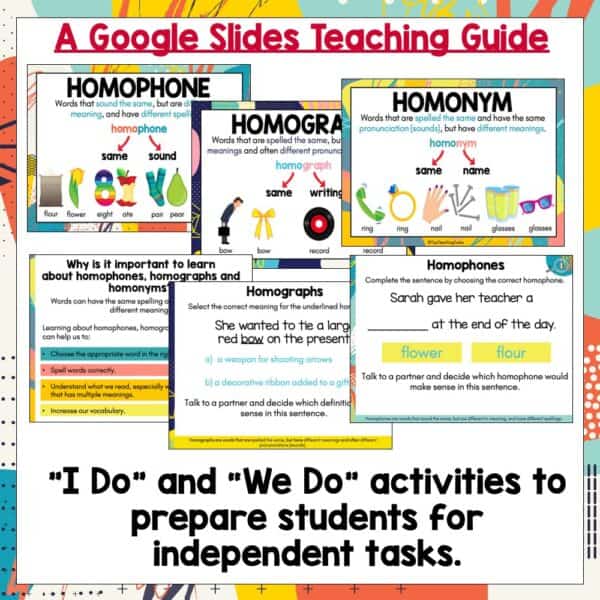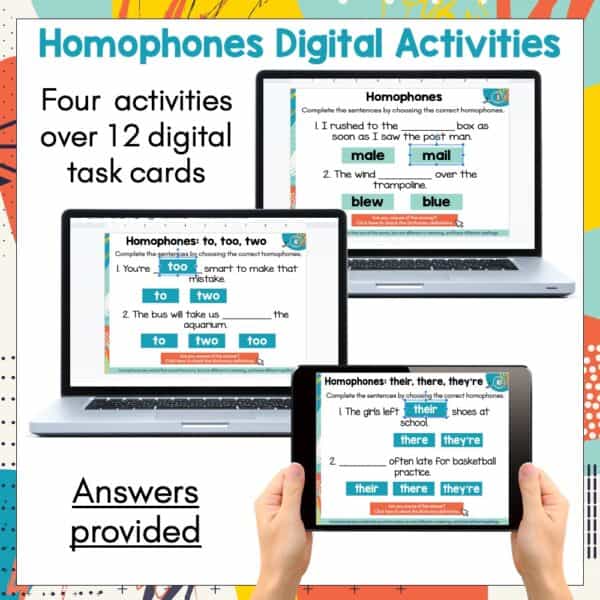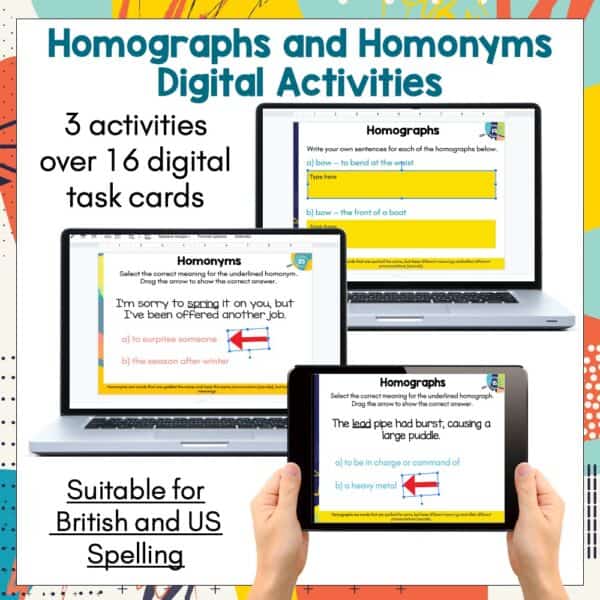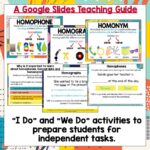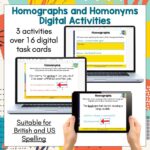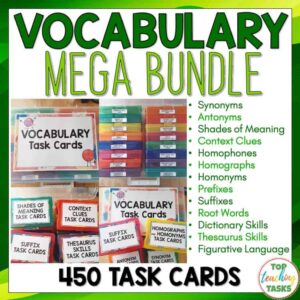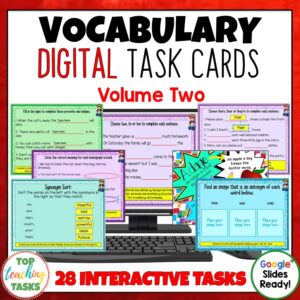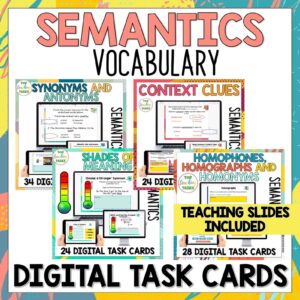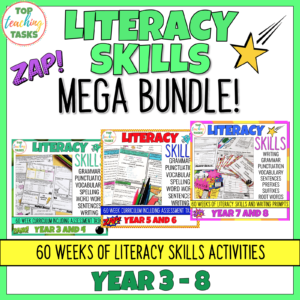Homophones, Homographs and Homonyms Digital Task Card Activities – Semantics
NZ$5.00
Description
Go paperless with our Homophones, Homographs and Homonyms Digital Task Card Activities. These Google Slides activities feature 28 interactive slides for students to work through. This semantics resource is aligned with the Science of Reading (SoR).
This semantics resource is suitable for Google Drive, Google Classroom, or Microsoft OneDrive (instructions included), and can be used on multiple devices!
In this resource you will receive:
1. 28 Homophones, Homographs and Homonyms Digital Task Cards featuring:
-
Homophones, Homographs and Homonyms teaching slides (21 slides) – step by step slides to help you teach students about these concepts
-
16 homophone interactive digital task cards
-
12 homograph and homonym interactive digital task cards
-
3 definition poster slides: homophone, homograph, homonym
2. Full instructions on how to use this Google Slides resource, and how to share it with your students.
3. Tips for using Google Slides for teachers AND students.
4. Answers slides
These activities are great for your literacy (reading, writing and spelling) program in both a traditional classroom with some access to mobile learning and a full 1:1 digital classroom. They are great for end-of-year revision, test prep, early finishers, bell ringer activities, home or hybrid learning, morning work, ESL, ELL, and ELD classrooms, or for homework tasks.
Why Teach Homophones, Homographs, Homonyms and other aspects of Semantics?
The meanings of words and the relationships of words are referred to as semantics. A reader’s breadth and depth of vocabulary contribute to reading achievement.
-
As the primary goals of reading and writing are determining and communicating meaning, it is important for students to understand the meanings of words and how words function in sentences.
-
As the majority of words in English have multiple meanings or shades of meaning, it is necessary for the reader to be flexible in determining the author’s intended meaning of a word within a sentence.
-
Semantics is one of the six evidence-based components of structured literacy.
-
Semantics (language structures) is one of the strands of Scarborough’s Reading Rope, which looks at the elements that make a skilled reader.




